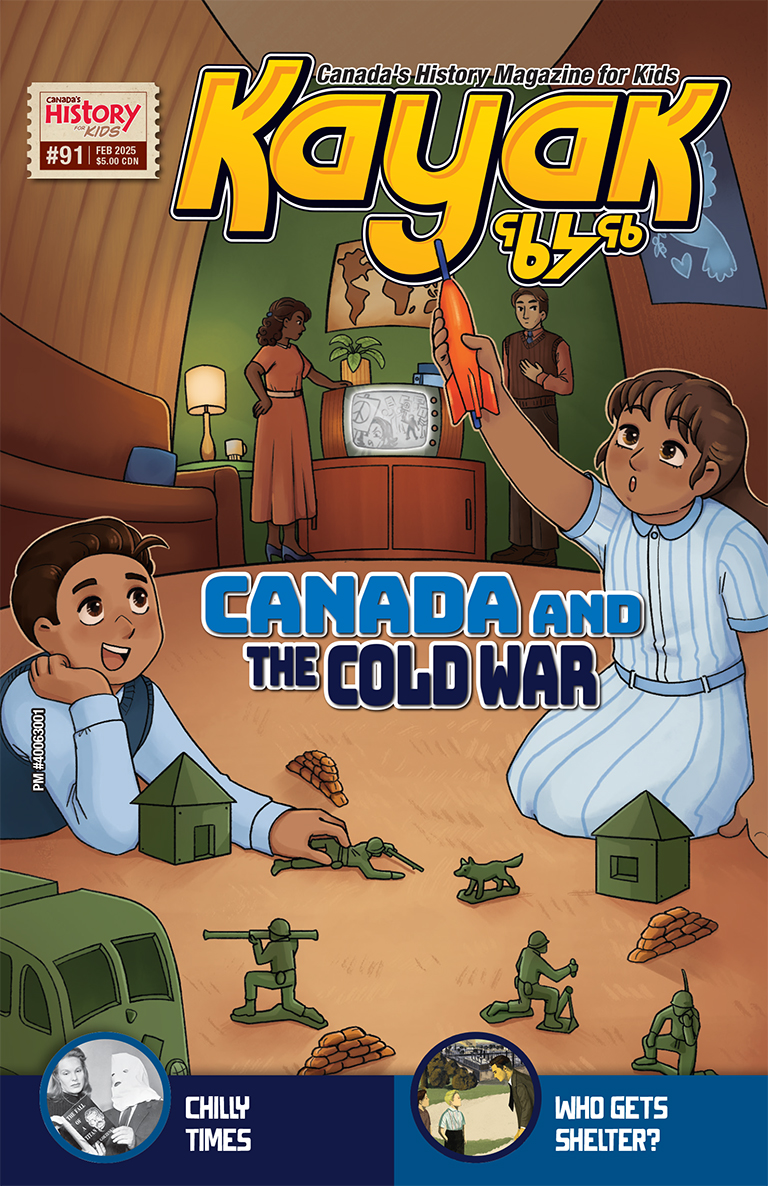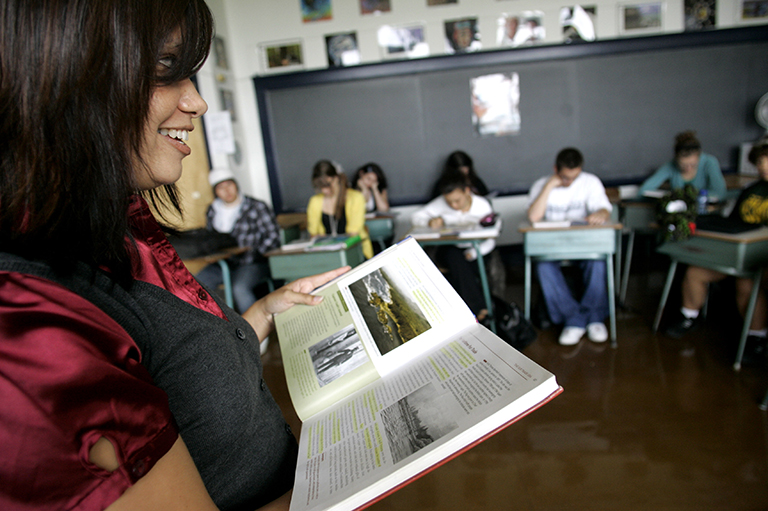Tracing the Tensions of the Cold War
Lesson Overview |
Grade Level: 9/10, 11/12 Subject Area: Social Studies/History Time Required: 2-3 lessons Magazine Issue: “Canada and the Cold War” (February 2025), Kayak: Canada’s History Magazine for Kids. |
| In this lesson, students will examine the context of the Cold War and the causes that led to the conflict. They will then determine the significance of each of these events for international relations and its impact on Canada. |
Historical Thinking Concept(s) |
|
Learning Outcomes |
Students will…
|
Background Information |
The Cold War was a period of geopolitical tension with the United States and the Soviet Union and their respective allies. During the time, the world was divided by the capitalist “West” and the communist “East.” As part of this lesson, there is a short summary of key political and economic events from the end of the Second World War and the early years of the Cold War. You may also want to review some of the following articles in preparation for this lesson:
|
Lesson Activity |
ACTIVATING
ACQUIRING
APPLYING
|
Themes associated with this article
Advertisement







